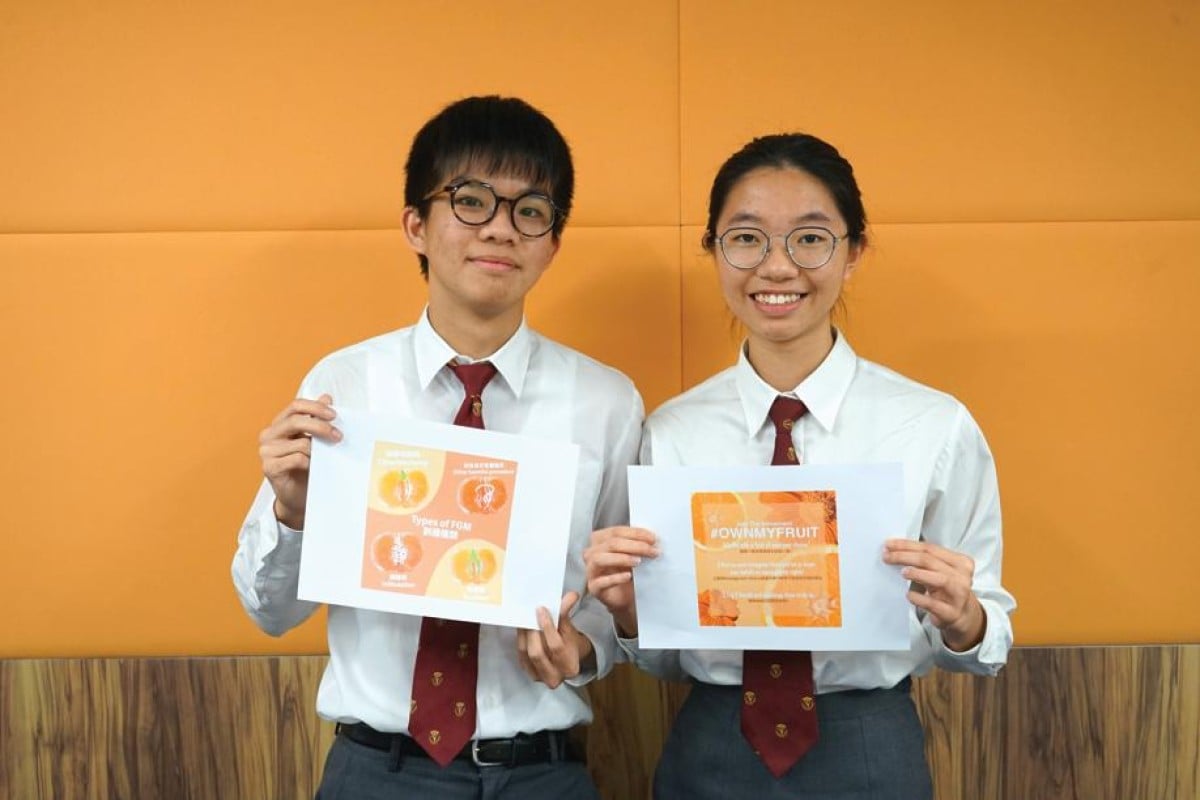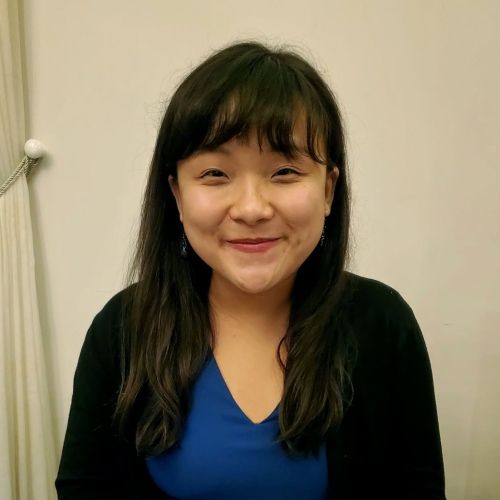
Queen Elizabeth School students use social media to take a new approach to charity
We speak to one of the winning teams at the 2019 Plan Youth Conference about their campaign video against female genital mutilation
 Jasper Koo (left) and Erica Lee share images from their winning presentation from the Plan International Hong Kong Youth Conference.
Jasper Koo (left) and Erica Lee share images from their winning presentation from the Plan International Hong Kong Youth Conference.Many charity adverts pull at your heartstrings with videos of people suffering in underdeveloped countries. But while this might make some people feel sad or even a little guilty, they rarely prompt viewers to act. Instead, most people tend to find these emotive ads a little off-putting.
Four students from Queen Elizabeth School recognised this problem, and decided to update this traditional charity marketing tactic to make it more appealing. Their overall aim: to raise awareness of the ritual of female genital mutilation (FGM) in Tanzania. FGM is the partial or complete removal of the external reproductive organs of girls or young women for non-medical reasons. It is a traditional practice in some cultures, but illegal in many countries.
“I’ve watched a lot of charity advertising videos, many of which show very depressing pictures at the start,” Jasper Koo Lok-yin, one of the group’s young activists, told Young Post.
Education, no matter the cost: One Hong Kong girl defies her family's wishes to attend university
“I found them unpleasant and ineffective in capturing viewers’ interests.”
Instead, Jasper said he wanted to take a more light-hearted approach, and create a video similar to the fun street interviews that he knew a lot of teens enjoyed watching.
Thanks to their efforts, Jasper and his teammates Erica Lee Tsz-ying, Bevy Wong Suet-ying, and Esther Yiu Yui-ching, all 17, were named Best Presentation Team (Secondary School Division) at the Plan International Hong Kong Youth Conference 2019 last September.
Using radio to save teens in Peru's highlands
Not only did they come up with practical solutions to ending FGM in Tanzania, but also launched an ingenious social media campaign to raise awareness of this very serious, yet little-known, issue.
The team interviewed young women on the street and at their school. These interviews were to become a part of their campaign video.
“We used menstruation as a conversation starter [and asked what the worst part of being a female is],” explained Jasper, who won the Best Presenter award in the Secondary School Division. The team were aware that some girls and women would make jokes about the lengths they would go to, to avoid period pains and other inconveniences of menstruating; at that point, the team could introduce the topic of FGM in Tanzania.
Cambodia's traditional way of life means child marriage is welcomed by many young women
“I tried to juxtapose the two [situations] to create more of an impact, and make people realise FGM is something that’s actually happening to girls in third-world countries,” he said.
The Form Six students kept their interviews light but informative, and produced a captivating charity video with upbeat background music and bright infographics featuring cross-section images of citrus fruit – which have been used in the past as symbols of female genitalia. “In the beginning, we didn’t know how to illustrate the [four] different types of FGM without showing people actual pictures,” Erica recalled.
Jasper got the idea for their infographics from ads that he’d seen from other countries.
“The symbol has been used elsewhere ... but not so much in Hong Kong,” he observed.
“Feminist organisations have also used it to represent female autonomy,” he added, so ot became a perfect icon to advocate women’s right to control their own body.
His female group mates were, however, slightly worried that the diagrams would appear provocative to some, or devalue their campaign.
“But in the end, we think it is still a better alternative to having no visuals, or showing people real, shocking images.” Jasper added.
The quartet’s concerns were later dissipated by the judges’ recognition and the campaign’s high social media engagement. Their originality and care in addressing FGM online also earned them the Youth Power - Best Campaign Award.
“The workshops and conferences have provided me with a more thorough understanding of global girls’ issues and inspired me to aim higher when fighting for women’s rights,” Erica reflected.
Jasper agreed, pointing out that human rights and individual freedom – which many Hongkongers have taken for granted until recently – are not enjoyed by females in less developed countries.
“Everyone needs to come together if we want to build a more gender-inclusive society,” he said.
